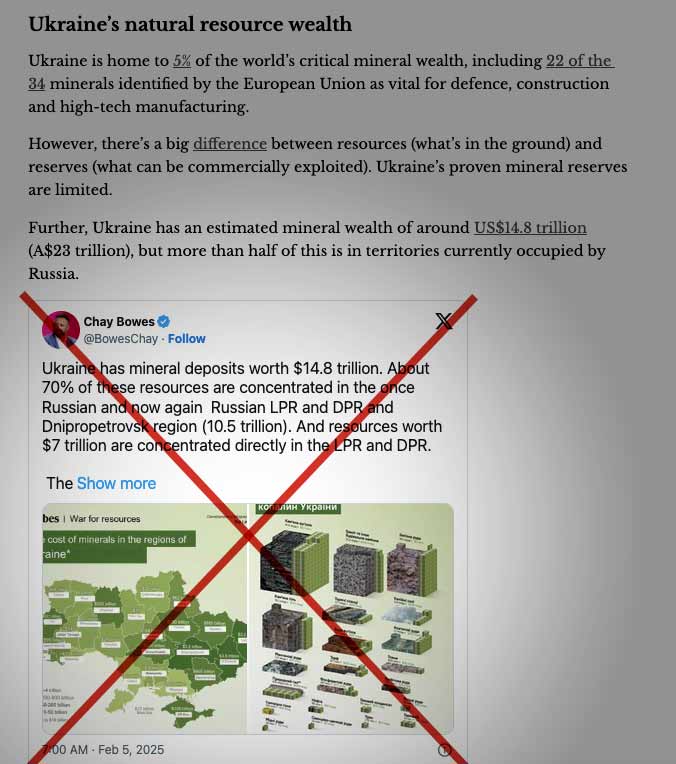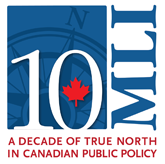An article titled —“Why Zelensky, not Trump, may have won the US-Ukraine minerals deal”—published by The Conversation, cites a tweet by a well known pro-Kremlin influencer, Chay Bowes that contains clear markers of Russian disinformation, particularly in its language and geopolitical framing.
Overview of Chay Bowes and the Tweet
Chay Bowes is a known pro-Kremlin influencer who has publicly amplified Russian state narratives, including misinformation about the war in Ukraine. In a May 2025 article, The Irish Times describes Bowes as “a reporter with RT (formerly Russia Today) which is banned in the EU and regarded as a propaganda arm of the Russian state. Bowes is a supporter of Russia’s war in Ukraine and defender of Putin’s foreign policy.” RT has been identified as a component of Russia’s global intelligence operations.
In this case, a Tweet by Bowes was included in The Conversation article, falsely claims that sovereign Ukrainian territory (Donetsk and Luhansk, i.e., “LPR” and “DPR”) as “once Russian and now again Russian,” directly echoing Kremlin propaganda used to justify Russia’s illegal occupation and annexation.

Disinformation Flags in the Tweet
- Territorial Disinformation & Legitimization of Annexation
- Refers to Donetsk and Luhansk (occupied eastern Ukrainian territories) as “once Russian and now again Russian,” legitimizing Russia’s illegal annexation and erasing Ukrainian sovereignty.
- Uses Kremlin-preferred acronyms “LPR” and “DPR”, which are unrecognized by the international community and considered part of occupied Ukraine.
Legitimization Through Amplification
Treating Bowes as a neutral source or expert grants him and his narrative undue credibility. His association with Russian state disinformation should be disclosed.
Any reference to Chay Bowes in a media or academic context should include a disclaimer of his alignment with Russian state narratives. Articles that cite such figures must either critically assess the source or risk being used—intentionally or not—as vectors for foreign disinformation.
Would you like a revised version of the article excerpt that flags or reframes the disinfo elements responsibly?

